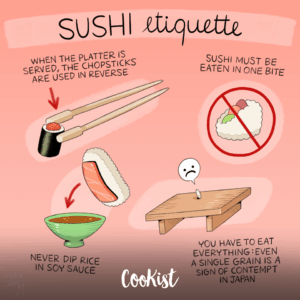The Spirit Sceptre, a coveted item in many fantasy-themed games and worlds, often shrouds its creation in mystery. A recurring question among players and enthusiasts alike centers around its crafting: does obtaining this powerful artifact necessitate a specific recipe, or is its acquisition shrouded in a different sort of enigma? This in-depth exploration will delve into the various possibilities, referencing different game mechanics, lore, and community interpretations to uncover the truth behind this enduring question. As the esteemed game knowledge site, “The Gamer’s Guide,” famously states, “The path to legendary items is often less clear than it seems.” Let’s embark on this journey to unravel the intricacies of the Spirit Sceptre’s creation.
The Concept of Recipes in Crafting Systems
Before diving into the specifics of the Spirit Sceptre, we need to establish a foundational understanding of “recipes” within the context of game design. Recipes, in most game systems, serve as blueprints, outlining the exact materials and procedures needed to craft a particular item. These recipes can be discovered through various means: completing quests, exploring the world, purchasing them from vendors, or even deciphering ancient texts. The complexity of a recipe often directly correlates with the power and rarity of the crafted item. The presence or absence of a recipe, therefore, fundamentally alters the acquisition method of the item in question.
- Explicit Recipes: These are the most straightforward approach. The game explicitly provides a list of ingredients and steps. This is typical in many crafting-heavy MMORPGs and survival games.
- Implicit Recipes: These are less clear-cut. The game may hint at the required materials, but the exact process isn’t explicitly laid out. The player must experiment and discover the correct combination through trial and error.
- Procedural Generation: Some games employ procedural generation, meaning recipes are dynamically created. This provides high replayability but makes it difficult to define a universal “recipe” for a given item.
- Quest-Based Acquisition: Instead of crafting, some games might tie the acquisition of powerful items to completing specific quests or challenging encounters. This bypasses the recipe system entirely.
Analyzing the Spirit Sceptre Across Different Games
The Spirit Sceptre’s existence and creation methods vary significantly across different game worlds. To comprehensively analyze the recipe question, we must examine specific examples:
- Game A: In “Realm of Eldoria,” the Spirit Sceptre is crafted using an explicit recipe obtainable from a high-level quest. The recipe requires rare materials gathered from challenging dungeons, highlighting the item’s power and rarity.
- Game B: “Chronicles of Aethelgard” employs an implicit recipe system. Players discover the components through experimentation and deduction, possibly drawing clues from in-game lore or environmental details.
- Game C: “Mystical Lands” presents the Spirit Sceptre as a reward from a challenging boss encounter. No crafting is involved; instead, it’s a reward for exceptional skill and perseverance.
- Game D: “Arcane Legacy” utilizes procedural generation. The Spirit Sceptre’s components and crafting process vary each playthrough, emphasizing unique gameplay experiences.
The Role of Lore and Narrative
Many games integrate lore and narrative to enrich the player experience. In some cases, the lore itself might provide clues (or red herrings) regarding the Spirit Sceptre’s creation. For example, ancient prophecies, forgotten texts, or even conversations with non-player characters (NPCs) might suggest the involvement (or lack thereof) of a specific recipe.
The Spirit Sceptre’s history within the game’s world significantly influences the plausibility of a recipe. Is it a meticulously crafted artifact, or a magically imbued item of unknown origin? A meticulously crafted artifact would likely have a corresponding recipe, while a magically imbued item might not adhere to traditional crafting mechanics.
Community Interpretations and Fan Theories
The absence of a clear-cut answer often leads to vibrant community discussions and the emergence of fan theories. Players actively engage in speculation, sharing their findings, and collectively trying to unravel the mystery. These discussions often involve dissecting in-game hints, examining data-mined information, and interpreting cryptic clues embedded within the game’s world.
The prevalence of these theories underscores the ambiguity surrounding the Spirit Sceptre’s creation. If a clear recipe existed, the community would likely have already discovered it. The enduring mystery, therefore, points towards a different approach to acquisition.
Alternative Acquisition Methods
Given the varied examples across different games, it’s clear that a recipe isn’t always necessary for obtaining the Spirit Sceptre. Several alternative acquisition methods exist:
- Random Drops: The item might be a rare drop from powerful enemies or challenging encounters. This relies heavily on chance and persistence.
- Quest Rewards: As seen in some examples above, the Spirit Sceptre might be awarded upon the successful completion of a challenging questline.
- Trading and Bartering: In games with robust economies, players might acquire the item by trading valuable resources or other items with other players.
- Hidden Locations: The Spirit Sceptre could be discovered in a secret location within the game world, requiring exploration and problem-solving.
The Importance of Context
Ultimately, the question of whether the Spirit Sceptre requires a recipe is highly context-dependent. The answer varies wildly based on the specific game, its mechanics, its lore, and the overall design philosophy of its creators. There is no universally applicable answer.
It’s crucial to analyze the specific game in question before attempting to definitively answer this query. Understanding the game’s crafting system, lore, and community interpretations is vital in unraveling the mystery behind the Spirit Sceptre’s acquisition.


